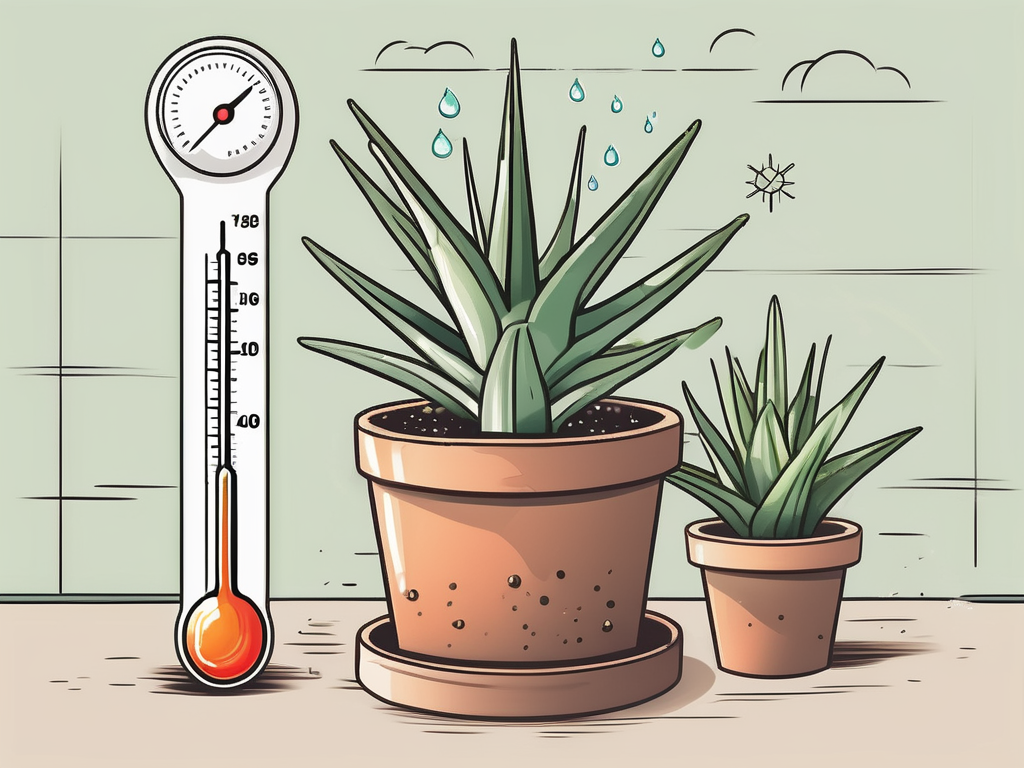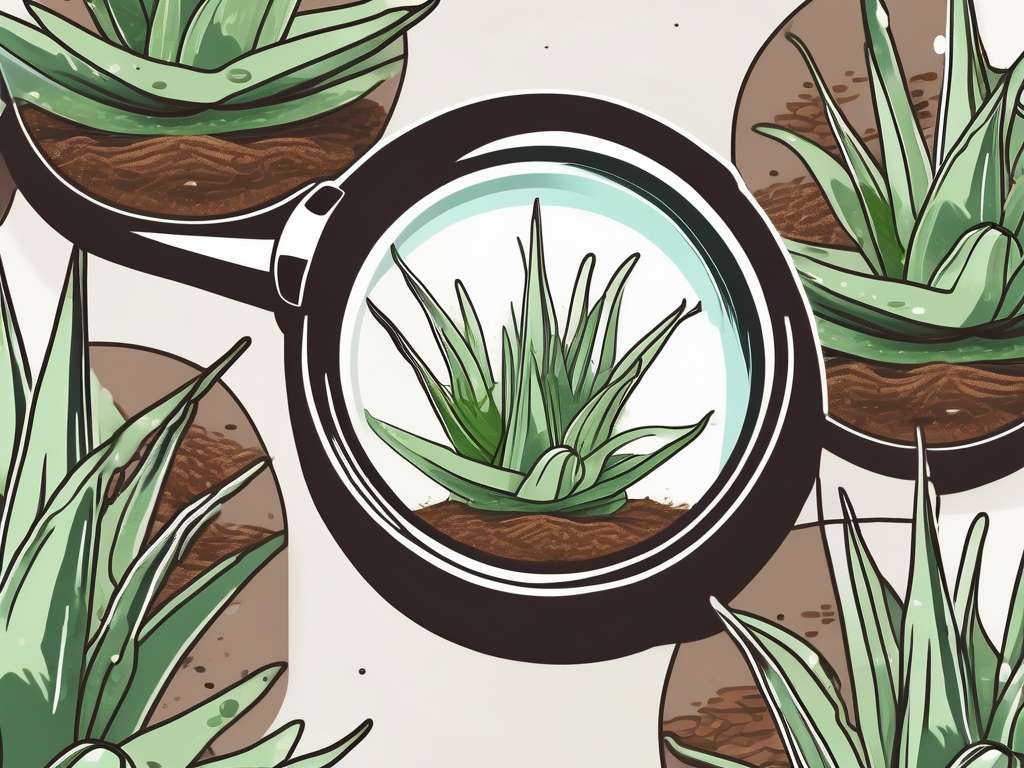
Aloe vera is a beloved houseplant, known for its healing properties and striking appearance. But like any plant, it has its quirks, and one of the biggest challenges for aloe vera is overwatering. If you've ever dealt with a droopy aloe vera or wondered why its leaves seem to be turning to mush, you're in the right place.
In this article, we'll take a deep dive into the effects of overwatering aloe vera, exploring why it's such a common problem and how you can prevent it. We'll also cover some practical tips for nursing your aloe back to health if you've already overwatered it. Let's get started!
Why Aloe Vera is Susceptible to Overwatering
First things first: aloe vera is a succulent. This means it's naturally adapted to arid environments where water is scarce. Its thick, fleshy leaves are designed to store water, allowing it to survive in dry conditions. While this trait makes aloe vera a low-maintenance houseplant, it also means that overwatering can quickly lead to trouble.
When aloe vera receives too much water, its roots can become waterlogged, leading to a lack of oxygen. This is a problem because roots need oxygen to function properly. In a waterlogged environment, the roots can start to rot, which disrupts the plant's ability to take up water and nutrients. Ironically, this can lead to symptoms of drought stress, such as wilting and yellowing leaves, even though the plant is drowning in water!
Another reason aloe vera is particularly prone to overwatering is its slow growth rate. Because it doesn't use a lot of water quickly, any excess water in the soil tends to linger, compounding the problem. And unlike plants that quickly show signs of thirst, aloe vera might not show signs of overwatering until the damage is already done.
Signs of Overwatering in Aloe Vera
Spotting the signs of overwatering early can make a big difference in saving your aloe vera. Here are some symptoms to watch out for:
- Mushy leaves: If the leaves of your aloe vera are soft and mushy rather than firm and plump, this is a classic sign of overwatering.
- Yellowing leaves: While some yellowing is natural as leaves age, widespread yellowing can indicate trouble.
- Wilting: Despite being overwatered, the plant may still wilt as its roots struggle to function properly.
- Root rot: If you notice a foul smell coming from the soil or if the roots look dark and mushy, root rot could be the culprit.
Interestingly, these symptoms can sometimes resemble those of underwatering, making it tricky to diagnose. However, if you're watering your plant regularly and still see these signs, overwatering is likely the issue.
How to Water Aloe Vera Properly
So, how do you water your aloe vera without crossing the line into overwatering? Here are some tips to help you get it right:
- Check the soil moisture: Before watering, stick your finger into the soil up to the first knuckle. If it feels dry, it's time to water. If it's still damp, hold off.
- Use the right pot: Make sure your pot has drainage holes to allow excess water to escape. A pot without drainage can lead to a buildup of water at the bottom, creating a soggy environment.
- Water thoroughly but infrequently: When you do water, do so thoroughly until water drains out of the bottom of the pot. Then, let the soil dry out completely before watering again. This mimics the plant's natural environment.
Remember, it's easier to recover from underwatering than overwatering. If you're unsure, it's better to err on the side of caution and water less frequently.
Choosing the Right Soil for Aloe Vera
The soil you choose plays a crucial role in preventing overwatering. Aloe vera prefers a well-draining soil mix that doesn't retain too much moisture. Here are some options:
- Cactus mix: This type of soil is specifically formulated for succulents and cacti, providing excellent drainage.
- Homemade mix: You can create your own mix by combining regular potting soil with perlite or sand to improve drainage.
When potting or repotting your aloe, make sure to use fresh soil, as old soil can compact and lose its aeration over time, contributing to poor drainage.
How to Rescue an Overwatered Aloe Vera
If you suspect your aloe vera has been overwatered, don't panic. Here are some steps you can take to help it recover:
- Stop watering: First and foremost, give the plant a break from watering until the soil dries out completely.
- Check the roots: Gently remove the plant from its pot and inspect the roots. Trim away any that are mushy or rotten using clean scissors.
- Repot with fresh soil: If root rot is present, repot the plant in fresh, dry soil. Make sure the new pot has good drainage.
- Provide indirect light: Place the plant in a spot with bright, indirect sunlight to help it recover.
It might take some time for your aloe to bounce back, but with patience and care, it can recover from overwatering.
Preventing Overwatering in the Future
Once your aloe vera is on the mend, it's important to prevent overwatering from happening again. Here are some strategies:
- Set a watering schedule: Create a routine that allows the soil to dry out between waterings. This might mean watering every two to three weeks, depending on your environment.
- Monitor environmental conditions: Factors like humidity and temperature can affect how quickly the soil dries out. Adjust your watering schedule as needed.
- Use a moisture meter: If you're not sure when to water, a moisture meter can be a helpful tool for gauging soil moisture levels.
By being mindful of your plant's needs and environment, you can create conditions that support healthy growth and prevent overwatering.
Creating a Plant-Friendly Space with Aloe Vera
Aloe vera isn't just a functional plant; it can also be a beautiful addition to your home decor. Here are some tips for incorporating aloe vera into your living space:
- Use decorative pots: Choose pots that complement your decor style, whether it's modern, rustic, or eclectic.
- Create a plant cluster: Group aloe vera with other succulents or houseplants to create a lush display.
- Place in high-traffic areas: Aloe vera's striking appearance makes it a great focal point for rooms where you spend a lot of time.
With its aesthetic appeal and easy-care nature, aloe vera can bring a touch of nature and tranquility to any space.
Common Misconceptions About Aloe Vera Care
There are several misconceptions about aloe vera care that can lead to overwatering. Let's debunk a few:
- "Aloe needs a lot of water because it's juicy": While aloe leaves are full of water, the plant itself doesn't need frequent watering.
- "Misting helps aloe thrive": Aloe vera doesn't need misting since it prefers dry conditions.
- "Bigger pots are better": Aloe vera does well in snug pots. Too much space can lead to excess soil moisture.
Being aware of these misconceptions can help you provide more appropriate care for your aloe vera.
The Benefits of Aloe Vera Beyond Decoration
Aloe vera is known for more than just its beauty. Here are some additional benefits:
- Healing properties: Aloe vera gel can soothe burns and skin irritations.
- Air purification: Like many houseplants, aloe vera can help improve indoor air quality.
- Low maintenance: Once you get the watering right, aloe vera is a forgiving plant that requires minimal care.
These benefits make aloe vera a valuable addition to your home, both as a decorative element and for its practical uses.
Final Thoughts
Overwatering is a common pitfall for aloe vera care, but with the right knowledge and techniques, you can keep your plant healthy and thriving. From understanding its natural tendencies to choosing the right soil and watering practices, every step counts in ensuring your aloe remains vibrant.
At Cafe Planta, we're passionate about helping you care for your plants. Whether you're looking for new plant friends, accessories, or advice, we're here to support your plant journey. If you have questions or need guidance, feel free to email us or drop us a message on Instagram. Let's grow together!
























